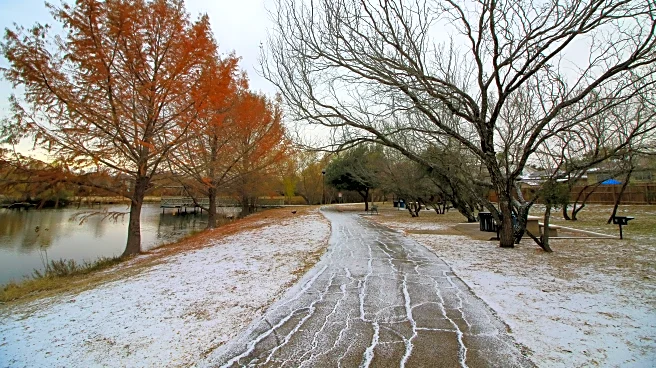What's Happening?
This year marks the 50th anniversary of the sinking of the Edmund Fitzgerald, a significant event in maritime history. The Edmund Fitzgerald was the largest ship to have sunk in the Great Lakes, and its story has been immortalized by Gordon Lightfoot's
1976 folk ballad. The song brought widespread attention to the tragedy, ensuring that the memory of the ship and its crew remains alive. Despite the estimated 6,500 ships that have sunk in the Great Lakes, the Edmund Fitzgerald stands out due to the cultural impact of Lightfoot's song, which became a surprise hit and has kept the story in public consciousness.
Why It's Important?
The enduring legacy of the Edmund Fitzgerald highlights the power of music and storytelling in preserving historical events. The ship's sinking is not only a maritime tragedy but also a cultural touchstone, illustrating how art can influence public memory. The continued interest in the Edmund Fitzgerald underscores the importance of maritime safety and the need to remember those who have lost their lives at sea. It also reflects on the broader historical and economic significance of the Great Lakes shipping industry, which has been a vital part of the region's development.
What's Next?
As the 50th anniversary is commemorated, there may be renewed interest in maritime history and safety regulations. Events and discussions around the anniversary could lead to increased awareness and possibly inspire new artistic works or historical research. The anniversary serves as a reminder of the ongoing risks faced by those who work on the Great Lakes and the importance of continuing to improve safety measures.
Beyond the Headlines
The story of the Edmund Fitzgerald also touches on themes of human resilience and the impact of natural forces. The Great Lakes, often referred to as inland seas, present unique challenges and dangers that continue to affect shipping today. The cultural resonance of the ship's story may also prompt reflections on how communities remember and honor those lost in such tragedies, and how these narratives shape regional identities.
















